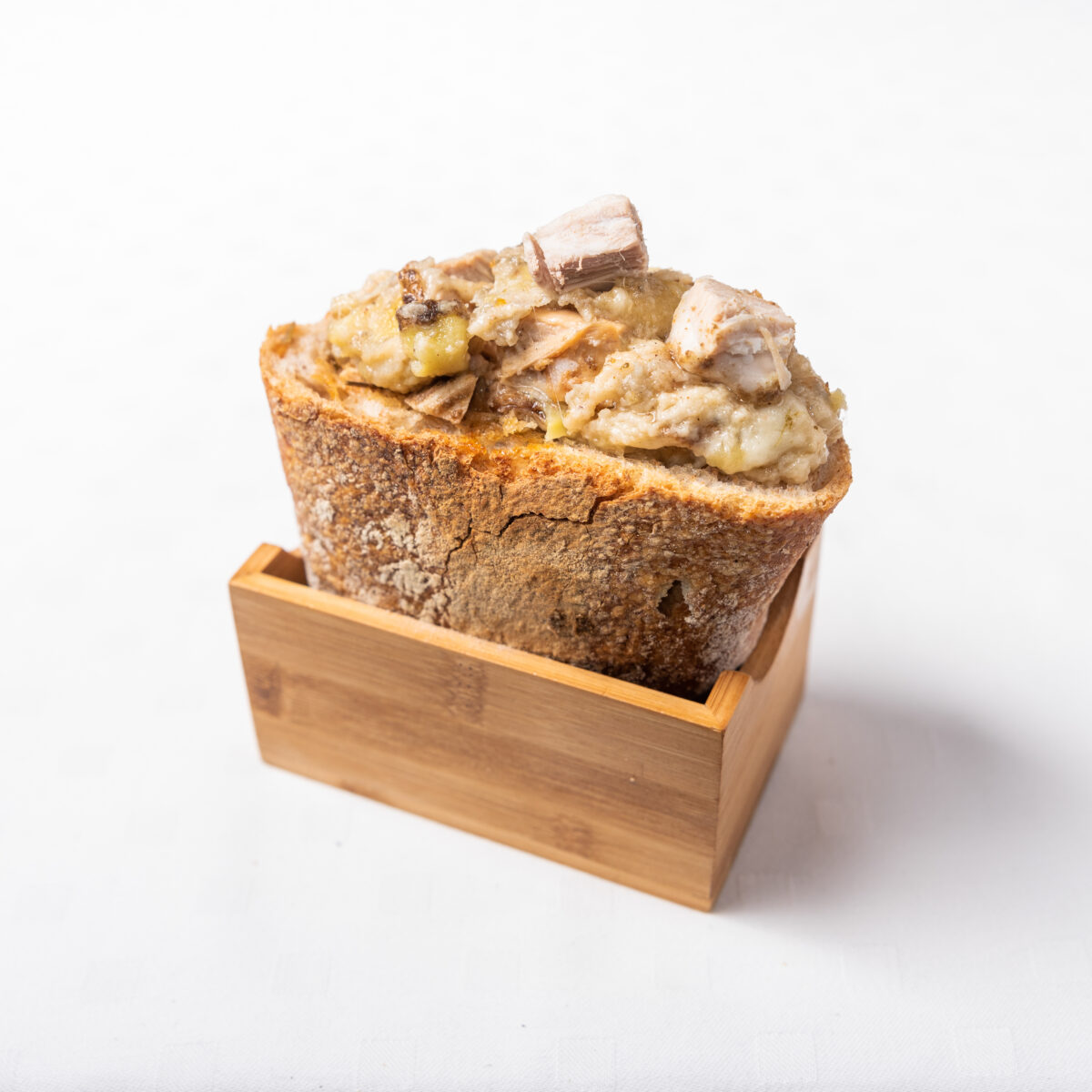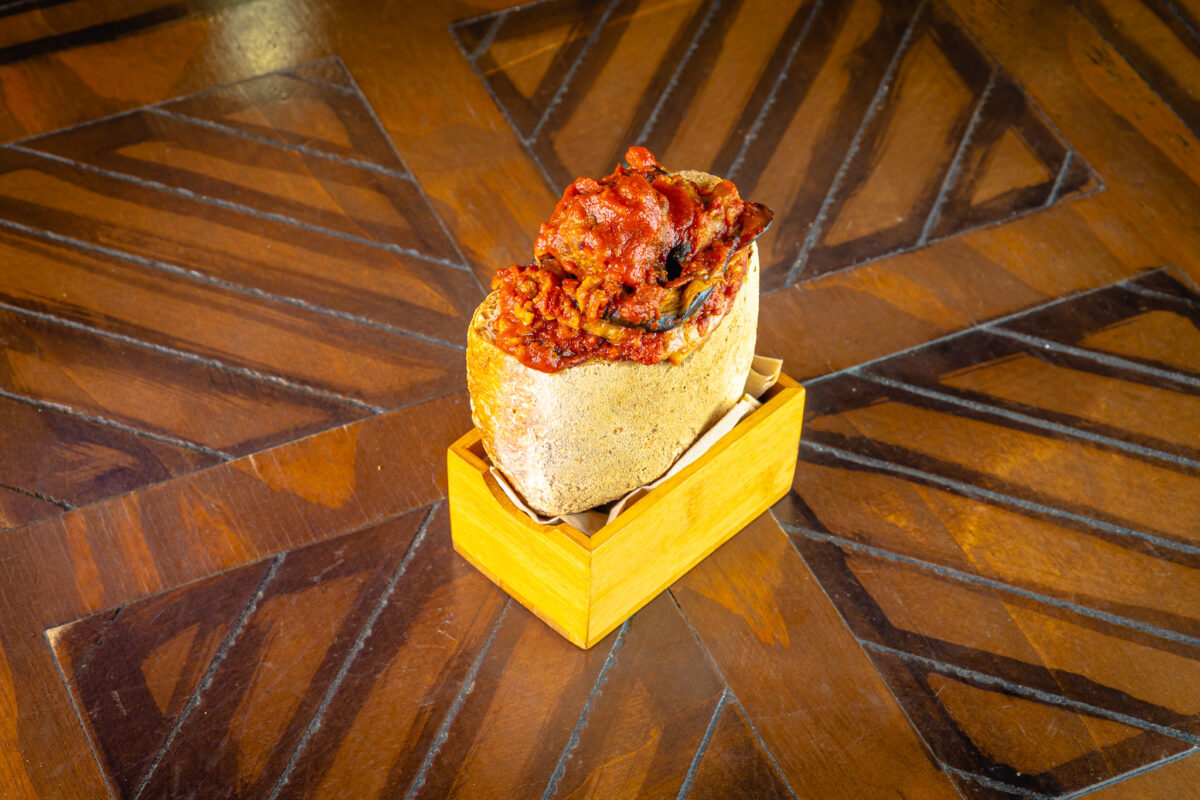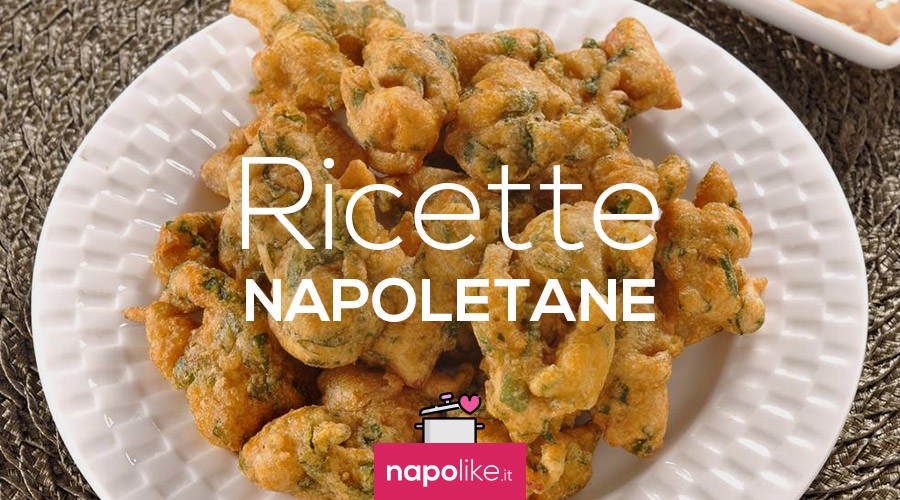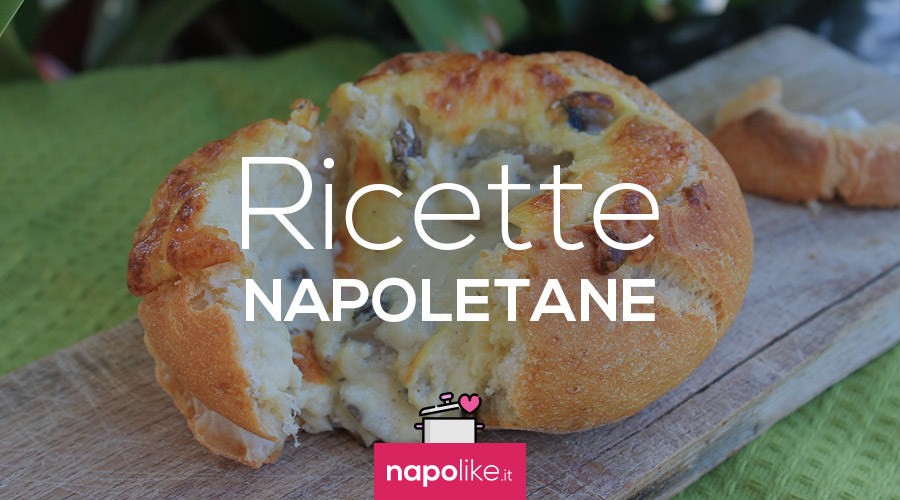Cuzzetiello, using a term as close as possible to the Italian version, is a real ritual rather than a culinary product, and the rituals in Naples are a very serious matter.
How do you pronounce the "cuzzetiello"?
Its pronunciation in Neapolitan is different from how it is written. In fact, it is written cuzzetiello but pronounced "cuzz'tièllo" with the first "e" just hinted at and aspirated.
This Neapolitan culinary product comes from the practice of dipping homemade bread in ragù, a natural gesture, but not to be confused with the classic liner which is practiced at the end of the meal when the dish of meatballs or pasta is already finished. O 'cuzzetiello, in fact, it comes from the custom of dipping bread in the sauce that is still boiling.
The history of the "Neapolitan cuzzetiello"
Cuzzetiello, like many dishes that later became famous, comes from a poor and almost recovered recipe, as in the case of many other Italian recipes, from north to south.
In the Neapolitan culinary tradition, the cuzzetiello was the "marenna“, Which could be literally translated as snack, although it does not have absolutely the same meaning.
La marenna it is, shall we say, a substantial snack to eat during the lunch break at work. But over time this simple practice has become a true representation of the Neapolitan street food, which tourists are also very fond of.
The cuzzetiello recipe is a sandwich but not strictly speaking, more than anything else the homemade bread becomes a container for the ragù. Indeed, the custom sees that one of the two ends of the bread peasant is deprived of the crumb so that the crunchy crust becomes a sort of deep dish to contain ingredients typical of the Neapolitan tradition. Tradition has it that to fill the bread are meatballs with meat sauce but with the passage of time from this classic and traditional recipe different variations were born.
Among the most used recipes are the variant with eggplant and mushroom parmigiana or the one with stew and potatoes. But there is also the variant mortadella and provola di Agerola or the versions with fish or seafood and, finally, for the sweet tooth we must mention o 'cuzzetiello alla nutella.
The art of getting by, the cuzzetiello philosophy
Naples is a very warm and lively city, its population has always tried to create wonders even from the smallest things. After all, pizza, many may think, is nothing more than a disc of pasta with tomato and mozzarella on top. But now we all know what pizza has become all over the world, let's talk about the most eaten dish thanks to its hundreds of versions (sometimes better not to mention the pineapple pizza though…).
The philosophy of cuzzetiello, like many others, is precisely this. Many will think what is so special about dipping homemade bread in ragù, but it is precisely the ritual, the gesture which sometimes makes something a must.
In Naples, then, a simple recipe becomes a culinary experience and from the classic recipe infinite paths open towards different and varied versions. The cuzzetiello recipe has expanded to infinite horizons and from the simple ragù we have arrived at nutella, but also with fish or parmigiana. Being a simple recipe, like pizza, homemade bread stuffed in its extremity can be stuffed with anything, it will be the imagination to create always new and innovative recipes but also greedy and abundant.
The cuzzetiello is a fast food product that lends itself very well to culinary experiments and anything that can please the palate is welcome.
Here Naples has once again given an example of how a well-known dish is created from a simple dough and a little tomato.
Recipes with cuzzetiello
As a first recipe we cannot fail to mention the classic cuzzetiello, the traditional recipe from which everything was born.
Cuzzutiello Meatballs and Ragù
To prepare cuzzitielli with meatballs and meat sauce you must, first of all, cut and empty the cuzzetielli and set them aside.
The ingredients of this recipe are:
- six hundred grams of ground coffee,
- two eggs,
- two hundred grams of Parmesan,
- parsley,
- a glass of milk,
- a bottle of tomato sauce,
- two tablespoons of extra virgin olive oil,
- a small onion,
- the classic salt and pepper
Put all these ingredients in several bowls, in the larger one insert the ground so as to mix well to form the meatballs while in the other insert the crumb removed from the bread to soak it with milk (about 170 grams of crumb). Add two eggs to the ground together with the parmesan, parsley, salt and pepper and mix everything together.
Then add the breadcrumbs but remember first to squeeze it and then put it in the mixture, mixing again in this case. Now you can form round meatballs that you will arrange on the plate, cover them and let them rest for at least 30 minutes in the fridge.
How to prepare the sauce
While you wait, fry a little oil with the well sliced onion and add a quarter of the tomato puree, stir, boil for 10/15 minutes and then add another part and repeat this process a quarter of a pass at a time.
At the end, boil the sauce until a areola of oil has formed on the edges of the pan, at this point you can insert the meatballs.
We finish cooking the meatballs
Cook everything for at least 40 minutes over low heat. Check how much the sauce shrinks and manage it with the height of the flame, in the meantime adjust everything with pepper and salt if necessary. Once ready you can stuff the bread to form your traditional cuzzitiello recipe with meatballs and meat sauce.
Cuzzetiello with eggplant parmigiana
Among some of the most used and famous recipes of cuzzetiello, the version with eggplant parmigiana certainly cannot be missing, a variant that can also be defined as a classic because the parmigiana, let's face it, goes well with everything.
To prepare o'cuzzetiello with parmigiana you must first wash the aubergines then peel them and cut them into thin slices. Three aubergines can be enough for this recipe. After washing them thoroughly, let them drain.
How to purge the eggplant
It seems strange to say, but the aubergines go "purged". This operation is for eliminate the classic bitter taste typical of this vegetable, but how do you proceed?
In reality it is very simple, just sprinkle each slice of eggplant with coarse salt and arrange them one on top of the other in a colander, so that they gradually release their liquid and, with it, the bitterness.
Let's proceed in the preparation of the eggplant parmigiana
Switch to rinse the aubergines and dab them with paper so that they dry well. Subsequently, we will move on to put the aubergines in the flour and then in the beaten egg.
After that, the aubergines will be fried a few at a time in plenty of seed oil that is already hot enough, when they are fried they can be placed on other absorbent paper to remove excess oil.
Meanwhile, cut the mozzarella (or provola) into slices and preheat the oven to 180 degrees for at least 20 minutes (if you want to cook in a pan, obviously skip this step).
Prepare the sauce
As already done in the previous recipe, we briefly summarize the preparation of the sauce (but we invite you to take a look at the previous paragraph for more details!) in a saucepan fry a clove of garlic together with a little extra-virgin olive oil and then add the tomato puree (a quarter at a time) and a few basil leaves to flavor, together with the salt and cook well.
We assemble the eggplant parmigiana
Now is the time to put it all together.
Prepare the various layers like this:
- A layer of gravy
- A layer of eggplant
- A layer of parmesan and provolone (or mozzarella)
And continue like this until all the ingredients are finished.
You are ready for the last cooking.
There are two variations for this preparation, one in the oven and one in a pan.
Baked Parmigiana
Put everything in a pan and put it in the oven that you have previously preheated for about 20 minutes, then let it rest for at least 15 minutes. It may seem silly, but by resting it will become much better!
Parmesan in a pan
Put the eggplant layers in a clean pan.
Cover the pan with a lid, preferably transparent to see the cooking, and cook for about a quarter of an hour or until the mozzarella is melted and the sauce well congealed.
The stuffing of the cuzzutiello
Now the highlight has come: take the homemade bread and divide it into two equal parts; remove the crumb and put the parmigiana inside it until it is full to the brim and put a few basil leaves to decorate.
At this point your cuzzetiello with eggplant parmigiana is ready to be tasted.
Cuzzetiello with stew and potatoes
The preparation of cuzzetiello with stew and potatoes obviously requires the purchase of a suitable cut of steak (preferably veal). It is advisable to ask the butcher for pieces that are large enough for later cut it on the spot into smaller bites so that it cooks faster.
The ingredients needed for this recipe:
- 1kg of beef
- 1kg of potatoes
- white wine (for blending)
- 1 carrot
- 1 onion
- 1 shallot
- celery
- sage
- Thyme;
- rosemary
- olive oil
Inside a terracotta pan, but a normal one is fine too, pour a little extra virgin olive oil and also add some very finely sliced shallot. Then, add some chopped carrot, onion, celery, sage, thyme and rosemary.
Let it fry slowly and sweetly, then, when it starts to sizzle, also add the stew. Mix by browning everything evenly, then blend with white wine and let it evaporate for a couple of minutes.
Now it's time to add the tomato puree with salt, always a quarter at a time, mixing it. Finally, let it cook for about twenty minutes.
Meanwhile, peel the potatoes and cut them into cubes.
After twenty minutes of cooking the stew, add the freshly cut potatoes and mix well. Then, pour a couple of ladles of hot water (or ready broth) and season with salt.
At the end of 45 minutes of cooking, strictly with medium-low flame, you should have a stew that is not too thick but creamy enough. I recommend: taste everything!
The time has come to cut the peasant bread in half, removing the crumb and creating a sort of container to insert the freshly prepared stew.
Your cuzzetiello with stew and potatoes is ready to be enjoyed.
Where to eat the Cuzzetiello
In recent years, various projects have been born specifically aimed at the renewal of the cuzzetiello, from a casual domestic meal to a real innovative street food.
We contacted and tested various places, including prominent taverns and street food.
We would like to clarify it: this is not a sponsored article, we are not promoting anyone.
Nothing prevents us from changing our opinion in the future and you will find another place between these lines.
The Cuzzetiello of The Sign
A truly high quality product, genuine ingredients and perfect cooking.
It is useless to get lost in useless chat, we can only invite you to try it at the Pozzuoli or Pomigliano offices.
Corso Umberto I, 51 / A | Lungomare di Via Napoli, 80078, Pozzuoli
Via Indipendenza 17-19, 80038 Pomigliano d'Arco

The Sign's menu of cozzetielli







